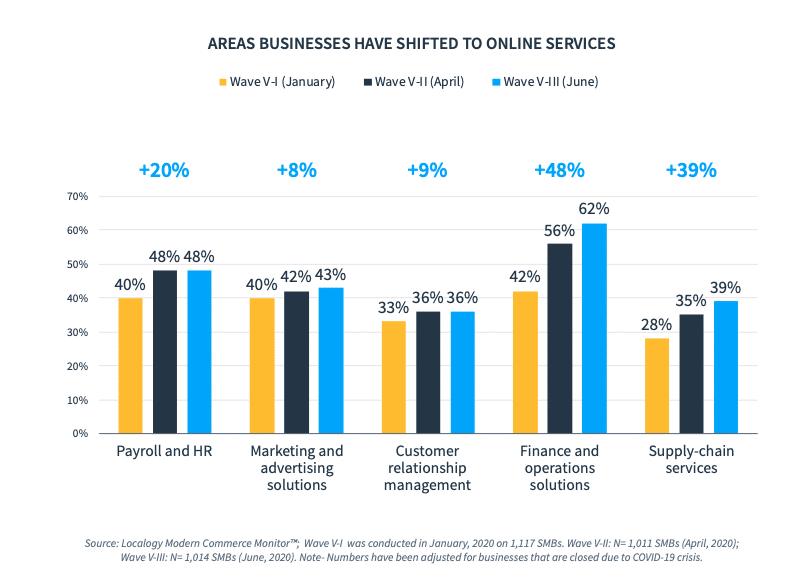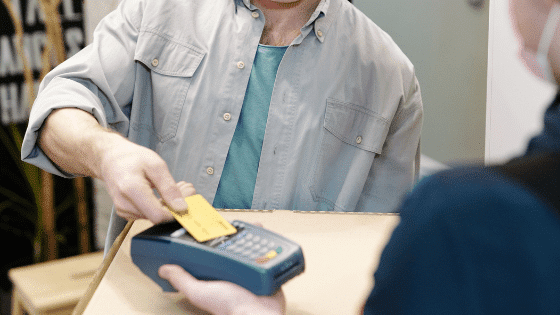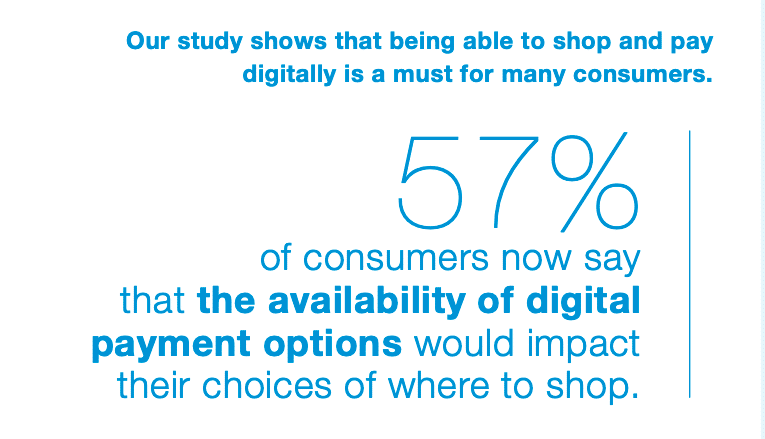A new report on the pandemic’s impact on consumer shopping patterns supports the case we’ve been making, and one that will be underscored by next week’s Localogy 20/20 virtual event. The pandemic is accelerating long term shifts to online shopping, mobile payments, and omnichannel commerce. And any company building software for small businesses needs to adapt.
“What was initially a necessity has now become a matter of personal preference,” says the introduction to the report, “How We Shop” from PayPal and the fintech publication PYMNTS.com. The two organizations began tracking consumer behavior changes in March and have interviewed 16,000 consumers to date. This report is based on the most recent survey of 2,163 U.S. consumers asking about their appetites for online commerce and digital touchless methods, including QR codes, contactless cards, and digital wallets.
From Bricks to Clicks
“The share of consumers who plan to return to brick-and-mortar stores is continuing to drop as the share of those who plan to shop using digital-first channels continues to climb,” the report said.
The report documents a pattern that we anticipated in this blog post, which looked at this issue from a small business perspective. We expected the offline to online shift to spike during the pandemic (as it has) and then recede. However, when the dust settles, adoption would be at a level that represents a big increase over pre-pandemic levels. It’s just common sense that as local economies open up, some consumers, weary of the stay at home lifestyle, will avail themselves of open stores and restaurants. Just not as many as before. Hence the “new normal” (please forgive us for using this cliche) is a dramatic acceleration of the expected adoption pattern.
For example, the PYMNTS.com/PayPal report found that 19% of consumers have shifted from dining in restaurants to ordering in. That figure is, of course, well able pre-pandemic levels. But between May and June it declined from 24% to 19%.
Similarly, the report says the latest data shows 40% of consumers are shopping more online and less online. That’s a huge leap from 12% before March, but a mild pullback from 42% in May. We suspect the immediate post-pandemic level will be less than 40% and well over 12%. In other words, acceleration.
Localogy Data Shows SMBs Responding to Consumer Signals
Since 2017, Localogy has long tracked small adoption of new technologies. In particular, we’ve followed the uptake of mobile apps and SaaS tools for every aspect of the business operating system — from customer acquisition through managing people, money, and supplies. Through the pandemic. we’ve seen technology adoption responding to consumer signals. In particular, toward interactions that minimize human contact.
One piece of evidence from our latest wave of Modern Commerce Monitor ™ data shows a big spike in the use of SaaS tools for finance and operations. This tracks with consumer demand for online and contactless payment solutions. The following chart shows a 48% rise in fintech adoption between January and June.
A new wave of MCM data will come in September. We’ll be interested in seeing if the pace of adoption settles. We will have to wait and see. However, it’s clear that pandemic-related behavior changes have accelerated technology adoption among both consumers and businesses. And while there may be settling, we can’t imagine the post-pandemic new normal (or is it “next normal”?) will resemble the old.

More from Localogy





